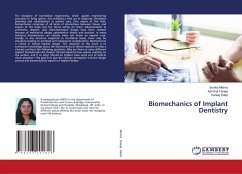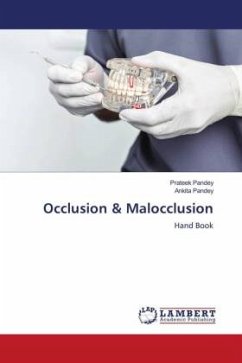
Biomechanics of Implant Dentistry
Versandkostenfrei!
Versandfertig in 6-10 Tagen
41,99 €
inkl. MwSt.

PAYBACK Punkte
21 °P sammeln!
The discipline of biomedical engineering, which applies engineering principles to living system, has unfolded a new era in diagnosis, treatment planning and rehabilitation in patient care. One aspect of this field, biomechanics comprises of all kinds of interactions between tissues and organs of the body and the forces acting on them. Advancements in prosthetic, implant, and instrumentation design have been realized because of mechanical design optimization theory and practice. In many instances biomechanics can literally make (or) break an implant case. Usually, in any structure subjected to ...
The discipline of biomedical engineering, which applies engineering principles to living system, has unfolded a new era in diagnosis, treatment planning and rehabilitation in patient care. One aspect of this field, biomechanics comprises of all kinds of interactions between tissues and organs of the body and the forces acting on them. Advancements in prosthetic, implant, and instrumentation design have been realized because of mechanical design optimization theory and practice. In many instances biomechanics can literally make (or) break an implant case. Usually, in any structure subjected to functional loads, there may be situations leading to overload and subsequent complications. Biomechanics is critical in dental implant design. The objective of this book is to summarize knowledge about the biomechanics of dental implants to help a clinician confront the following questions: Why are there so many different implant biomaterials and shapes? Should implants have special coatingson the surface, and if so why? Should an implant have some sort of built-in shock absorber? The goal is to give the clinician perception into the design process and biomechanical aspects of implant design.












